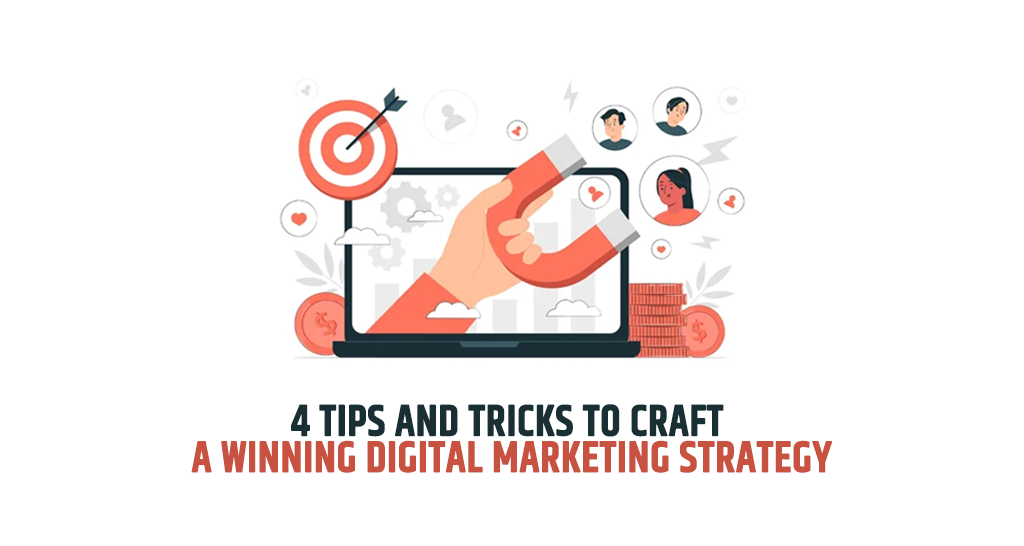Every business today understands the importance of digital marketing, but not all know how to do it right. Many businesses, especially startups, rely on trial and error to boost online visibility. Sometimes, this approach yields great results, while other times, it falls flat.
In a competitive online environment, the difference between success and failure often hinges on strategy. With a well-thought-out plan, you can strengthen your online presence and see your ROI and ROAS soar.
But how do you craft such a winning strategy? Let’s dive in and find out!
Understand Your Audience Deeply
A deep understanding of your audience is the foundation of any successful digital marketing strategy. Start by creating detailed buyer personas that represent your ideal customers. Dive into specifics like lifestyle choices, values, and challenges they face daily. This deeper insight allows you to create content that truly resonates.
Don’t stop at general data; explore psychographic factors such as what motivates your audience, their preferred communication styles, and even their online behaviors during different times of the day. This level of detail helps you anticipate their needs and position your products or services as solutions to their specific problems.
Use tools like social media insights, Google Analytics, and surveys to gather data. This data will help you identify trends, preferences, and the platforms your audience frequents most. By knowing exactly who you’re targeting, you can create more personalized and effective marketing messages that resonate with potential customers.
Content is King, But Engagement is Queen
Creating top-notch content is key, but it’s not enough. You need to make sure people see and interact with it. This means sharing your content on the right platforms and using social media to start conversations. Encourage your audience to like, comment, and share your posts.
Think of your content as a conversation starter, not a monologue. Ask questions, run polls, and respond to comments. Building relationships with your audience is just as important as creating great content.
To expand your reach even further, consider combining different content formats. For instance, you could create a podcast episode based on your blog articles or vice versa. This repurposing strategy allows you to cater to different audience preferences and reach people who prefer audio content over written text.
Take inspiration from podcasts like “The POMCAST,” which educates listeners on digital marketing strategies to boost ROI and ROAS. By diversifying your content formats, you increase your audience reach, reinforce your message, and create a more engaging experience for your followers.
Leverage Data to Shape Your Strategy
Are you making decisions based on gut feelings or letting data guide your digital marketing strategy? Relying on data-driven insights is essential for developing a winning approach. Instead of blindly following trends, dig into your past campaigns’ performance metrics.
Collect data on key performance indicators like conversion rates, customer engagement, and return on investment (ROI). Analyze this information to identify patterns and trends that reveal what resonates with your audience.
This approach allows you to refine your strategy continuously, optimizing what works and eliminating what doesn’t. By grounding your decisions in data, you create a more targeted and effective digital marketing plan that drives actual results and maximizes your marketing efforts.
Turn Browsers into Buyers with Retargeting Ads
Retargeting ads are a powerful tool for bringing back potential customers who have shown interest in your brand but didn’t take action. These ads target users who have visited your website or interacted with your content but didn’t complete a purchase or sign up.
For example, if someone adds a pair of shoes to their cart but leaves without buying, a retargeting ad can appear on their social media feed or other websites they visit, reminding them of the shoes. You can include a message like, “Don’t miss out! Complete your purchase now and enjoy free shipping!” This type of personalized reminder often encourages customers to return and finish their purchases.
Retargeting works well across various platforms like Google Display Network and social media. By staying top-of-mind, you increase the chances of converting interested visitors into loyal customers. This strategy is especially effective for reducing cart abandonment and boosting overall sales.
To Sum It All Up
Crafting a winning digital marketing strategy requires a mix of creativity, data-driven insights, and a deep understanding of your audience. By focusing on quality content, leveraging emerging platforms like podcasts, and embracing a multi-channel approach, you can build a strategy that enhances your online presence and drives tangible results.
Consider seeking assistance from digital marketing firms, as they can understand your needs and help create strategies that actually align with the audience and your goals. Ultimately driving the results you’ll thrive on.

